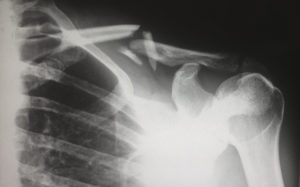Standard Field Sobriety Tests (SFSTs) are generally conducted roadside during a Vermont DUI investigation. Most DUI investigations begin with a motor vehicle stop based on reasonable suspicion of criminal activity or a motor vehicle violation. After purportedly observing indicia of intoxication (which may include admission to drinking by the operator, odor of intoxicants, presence of alcoholic beverages in the vehicle, slurred or mumbled speech), Vermont law enforcement will either request or order you to exit your vehicle.
You do not have submit to roadside standard field sobriety testing (SFSTs) during a DUI investigation in Vermont.
It is your right to refuse all SFSTs, however, law enforcement are not required to inform you of that right. This frustrating reality is the current state of the law in Vermont.
The battery of tests that traditionally comprise the standard field sobriety tests (SFSTs) are the Horizontal Gaze Nystagmus (HGN) test, the Walk and Turn test and the One Leg Stand (OLS) test. After these tests a preliminary breath test of (pbt) is requested.
The HGN test looks for jerking or bouncing of your eyes prior to maximum deviation. Horizontal gaze nystagmus is an involuntary jerking of the eyeball which occurs as the eyes gaze to the side. Under normal circumstances, nystagmus occurs when the eyes are rotated at high peripheral angles. However, the theory police use is the idea that when a person is impaired by alcohol, nystagmus is exaggerated and may occur at lower angles. An alcohol impaired person could also experience difficulty smoothly tracking a moving object.
In the HGN test, the officer observes the eyes of a suspect as the suspect follows a slowly moving object such as a pen or small flashlight, horizontally with his eyes. The law enforcement officer looks for three indicators of impairment in each eye: if the eye cannot follow a moving object smoothly, if jerking is distinct and sustained nystagmus when the eye is at maximum deviation, or if the angle of onset of jerking is prior to 45 degrees of center. The HGN test can be invalidated by bright or flashing blue lights (officers are instructed to turn them off when they are trained, but they can forget). An experienced Vermont DUI attorney can review your case to see if any potential irregularities occurred during the HGN testing that might nullify the claimed result.
During the Walk and Turn test the subject is directed to take nine steps, touching heel-to-toe, along a straight line. After taking the steps, the suspect must turn on one foot and return in the same manner in the opposite direction. The examiner looks for eight indicators of impairment: if the suspect cannot keep balance while listening to the instructions, begins before the instructions are finished, stops while walking to regain balance, does not touch heel-to-toe, uses arms to balance, off the line, takes an incorrect number of steps, or makes an improper turn.
When performing the one-leg stand test, the subject is instructed to stand with one foot approximately six inches off the ground and count out loud by ones beginning with one thousand (one thousand-one, one thousand two, etc.) until told to put the foot down. The Vermont officer times the subject for 30 seconds. The officer looks for four indicators of impairment including: swaying while balancing, using arms to balance, hopping to maintain balance, and putting the foot down.








